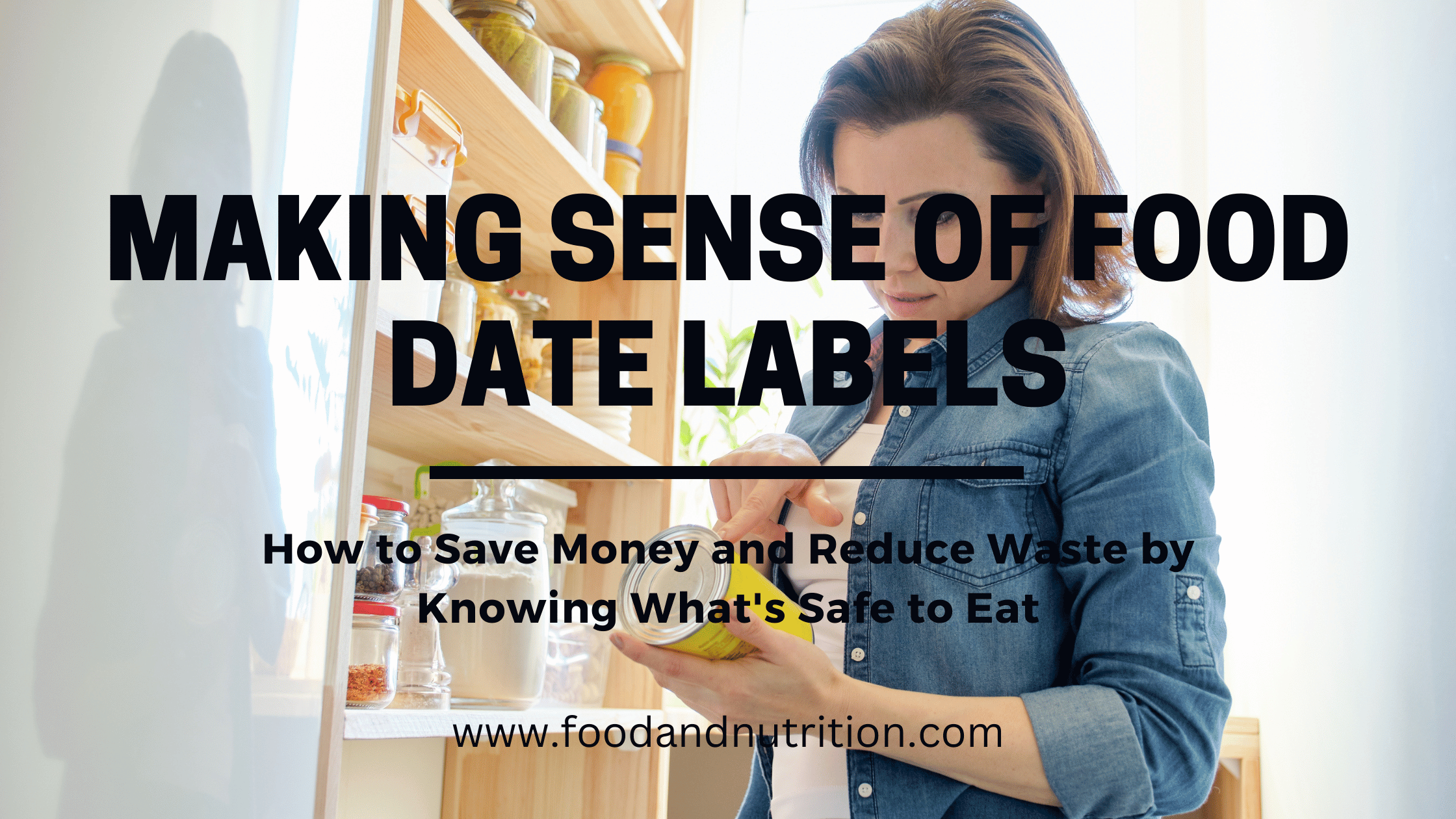Making Sense of Food Date Labels: How to Save Money and Reduce Waste by Knowing What’s Safe to Eat

Food labeling can be confusing, especially when it comes to deciphering the difference between “best before” and “use by” dates. In this blog post, we will help you navigate food labeling and expiration dates by exploring the various types of food packaging and their respective date labels, discussing whether it is safe to eat food after the use by date, providing a guide to key food items and how long they can be consumed after their expiration date, and touching on foods that do not have a date label.
Food packaging comes in many forms, each with its own date label. Canned goods usually have a “best before” date label, indicating the peak quality of the product. However, canned goods can be safely consumed long after their “best before” date, provided the can is not damaged, and the food appears and smells normal. Fresh produce, such as fruits and vegetables, do not have a date label. Inspect them for signs of spoilage, such as mold or discoloration, before consuming.
Dairy products, including milk and cheese, typically have a “use by” date label indicating the last recommended date for consuming the product for quality and safety reasons. Meat and poultry also have a “use by” date label. It is important to consume dairy products, meat, and poultry products by the “use by” date to avoid the risk of foodborne illness.
While the use by date is an essential indicator of food safety, it is not a guarantee of safety. Food can spoil before the use by date if it is not stored correctly or if the packaging is damaged. Some foods can be safely consumed after the use by date, such as hard cheeses like cheddar and Parmesan, provided they are stored properly and show no visible signs of mold. Similarly, canned goods can be safely consumed long after their best before date, provided the can is not damaged, and the food appears and smells normal. However, use your senses to determine if a food is still edible, even if it is past its expiration date.
Food waste is not only wasteful but can also be costly. To make the most of the food you purchase, plan meals ahead of time to avoid overbuying food that will go to waste. Store food correctly to extend its shelf life. For example, store perishable foods like meat and dairy products in the fridge at the right temperature to prolong their shelf life. Freeze food that you can’t consume before its expiration date to extend its shelf life. Use your senses to determine if a food is still good, even if it’s past its expiration date. Use leftovers creatively to make new meals. For instance, leftover vegetables can be used in a stir-fry, and leftover meat can be used in a soup or stew.
Here’s a guide to some key food items and how long they can be consumed after their expiration date. Bread can be consumed 1-2 weeks after its expiration date if it is stored correctly. Eggs can be consumed up to 3-5 weeks after their expiration date if they are stored properly. Hard cheeses like cheddar and Parmesan can be consumed up to 6 months after their expiration date if they are stored properly and show no visible signs of mold. Soft cheeses like brie and feta should be consumed within a week of their expiration date. Yogurt can be consumed up to 1-2 weeks after its expiration date if it is stored correctly. Meat should be consumed by its use by date to avoid the risk of foodborne illness. However, if it is stored correctly and appears and smells normal, it can be safely consumed for a few days after its use by date.
While many foods have a date label, some do not. For example, fresh produce does not have a date label. Inspect it for signs of importance of consuming food by its use by date to avoid the risk of foodborne illness, but also how some foods can be safely consumed after their expiration date if stored properly and showing no signs of spoilage.
It is essential to use your senses and common sense when determining if a food is still safe to consume. If a food looks and smells normal, it is likely still safe to eat, even if it has passed its expiration date. Proper food storage is also crucial to extend the shelf life of foods and reduce waste. Planning meals ahead of time, freezing foods, and using leftovers creatively can also help save money and reduce food waste.
It is important, to understand food date labels and proper food storage is essential for maintaining food safety and reducing waste. While some foods can be safely consumed after their expiration date, it is crucial to use your senses and common sense to determine if a food is still safe to eat. By following these tips, you can make the most of the food you purchase and save money while reducing waste.
- Eating Your Way to Healthy Blood Pressure: A Guide to Lowering Hypertension
- Unlock the Flavor: The Ultimate Guide to Cooking Salts
- Hydration Mastery for Athletes: Track & Field Performance Boost
- Salt & Heart Health: Unveiling the Truth Behind Sodium Intake
- Boost Immunity with Nordic Diet: A Guide for Healthier Living
- Tackling Obesity: Practical Strategies for Healthier Lives